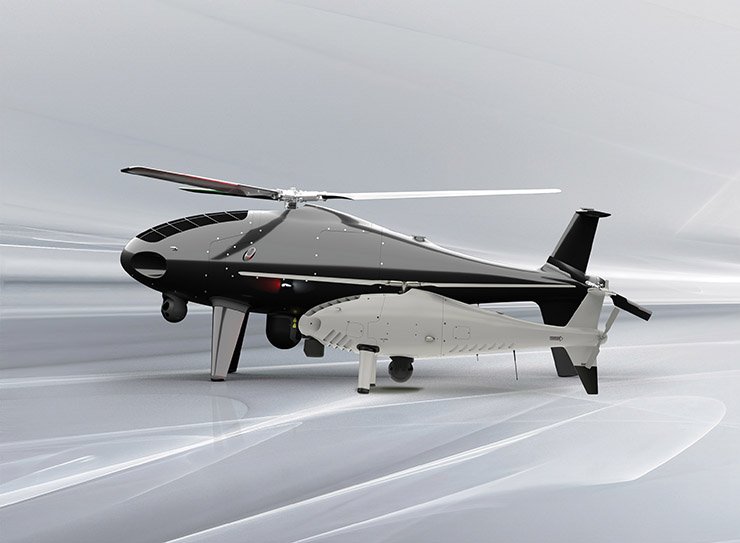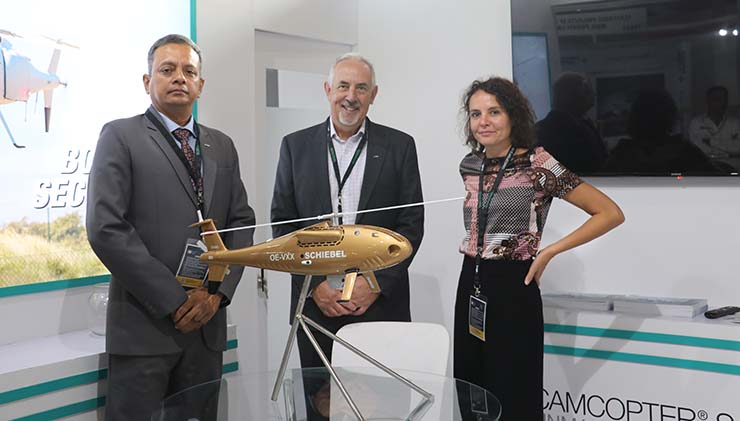
The global unmanned aerial vehicle (UAV) market is predicted to reach around US$ 53 billion by 2030, while the Indian UAV market was projected to cross $900 million by the end of 2021.Most militaries in the world today are investing in unmanned systems. This is exactly what is happening in the Indian army, Air force and Navy which are planning to induct combat drones equipped with electro-optic and thermal imaging capability to detect targets on land, air and sea as well as prevent cross-border terrorism and deal with intruder drones.
Unmanned Aerial Vehicles (UAVs) commonly called drones are equipped with advanced aerodynamic structures, and internal computers which can be controlled from the ground and are designed to perform multiple functions without endangering human life.
The Army Aviation Corps which manages the Indian Army’s inventory of drones is interested in procuring munitions that ‘loiter’ in the air before diving on ground targets and going for the kill. The Indian Navy plans to acquire a number of unmanned aerial and underwater platforms to ramp up its surveillance capability in the Indian Ocean region. The Indian Air Force (IAF) also plans to acquire 100 mini unmanned aerial vehicles (UAVs), to strengthen the security of the air bases along the western and northern borders.
The Indian navy is also keen to acquire unmanned minesweepers, and Naval Shipborne Unmanned Aerial System (NSUAS) in the next few years for anti-submarine warfare (ASW), surveillance, target acquisition, reconnaissance, MDA (maritime domain awareness); search and rescue (SAR) and anti-piracy operations to counter China’s forays into the Indian Ocean region.
One of the front-runners in the UAV market in India is 71-year-old Schiebel Group – a global company with a local vision – founded in Vienna in 1951, which focuses on the development, design and production of some of the best Unmanned Air Systems (UAS) in keeping with the best international standards, and good manufacturing practices. Schiebel which has facilities in Vienna and Wiener Neustadt (Austria), Manassas, VA (USA), Abu Dhabi (UAE), and Shoalhaven (Australia) is known for its reputation as a reliable producer of the high-tech military, commercial and humanitarian products, backed by exceptional after-sales service and support.
These are some of the reasons why Schiebel is today a market leader in rotary UAS and has delivered several hundred UAVs to customers globally. It has achieved several hundred thousand flight hours in all climatic conditions and is currently being used in demanding conditions in more than forty classes of ships, patrol vessels and helicopter carriers.
According to Jajati Mohanty, Schiebel CEO India, “Schiebel sees the global market for unmanned systems growing at a very fast rate, particularly in the Asian regions which have taken to unmanned systems with keen interest. We also see the world market maturing in the unmanned space with the global and local players finding comfortable spaces for themselves rather than competing everywhere and wasting precious resources.”
“IOR is going to be a playfield for global domination with 80% of global oil trade passing through the same. Vital choke points of Malacca, Hormuz and Bab-El-Mandeb require round-the-clock monitoring and the same is possible only with unmanned systems to ensure the least fatigue to human manpower” he added.
“Indian Navy has already begun its procurement for longer endurance strategic MALE assets for enhancing the tactical reach of warships operating in the IOR. Schiebel is currently participating in a fast-track procurement for tactical UAVs operating from warships,” Mohanty added further.

According to him, the CAMCOPTER® S-100 is the perfect platform for the Indian Navy’s tactical requirements. Keeping this in mind Schiebel would be participating in all the major procurements of the Indian Navy in association with VEM Technologies a leading Aerospace and Defence organisation to manufacture the S-100 in India and source payloads through certified Indian firms. The idea behind this is to create an ecosystem in India to manufacture rotary unmanned systems for the Indian sub-continent as well as the Asia Pacific region.
In the long run, this would open a wider defence marketplace in the Asia Pacific due to the existing relationship India has with a large number of nations, he said.
“We feel that Schiebel and VEM would be rightly placed for meeting tactical UAV requirements for Asian and Pacific markets,” he added.
Schiebel’s products include the CAMCOPTER® S-300 and the operationally proven S-100 Unmanned Air Systems (UAS) with varied military and civilian applications.
One of the latest entrants in the Schiebel Group’s inventory – the CAMCOPTER® S-300 has a maximum payload capacity of around 250 kg along with maximum endurance of about 20 hours with a light payload. The CAMCOPTER® S-300 a larger version of the S-100 has given a new twist to the UAV competition in the naval domain and filled a big gap in the heavy-lift-capable unmanned air system (UAS) market. Schiebel proudly demonstrated the new CAMCOPTER® S-300 rotary wing VTOL UAV at the Euronaval exhibition in Paris which has an extended range and enhanced payload capacity as compared to its little brother the CAMCOPTER® S-100, already in service in many navies worldwide.
The CAMCOPTER® S-300 UAS is 4.8 meters long, 1.9 meter high, 0.9 meter wide and can fly at a maximum speed of 120 knots (cruising speed 55 knots). The S-300 is able to carry up to 340 kg (fuel including) and its maximum take-off weight can reach 660 kg. The S-300 can also fly up to 24 hours (4 hours with 250 kg) with a 50 kg payload — three times more than what the S-100 can carry. This is essentially what is different between S-300 and S-100. A triple-blade folding rotor system allows the storage of S-300 UAV in a standard 20-foot container in the ground control station (GCS).
In the long run, due to its payload-carrying capacity and endurance, the S-300 is expected to make a big difference as an unmanned asset for high-altitude regions and change the current geopolitical situation.
In comparison, the CAMCOPTER® S-100 – a Vertical Takeoff and Landing (VTOL) is capable of transmitting high-definition payload imagery to the control station in real-time and does not require a prepared area or support equipment for launch and recovery. The UAS can operate anytime in day or night, under adverse weather conditions, even beyond the line-of-sight up to 200 km (108 nm) over land and sea. It can carry a 34-kg payload for up to 10 hours using AVGas or JP-5 heavy fuel.
The S-100 can successfully operate in environments where GPS is not available, with missions planned and controlled using a simple point-and-click user interface. Its carbon fibre and titanium fuselage provide capacity for a wide range of payload/endurance combinations up to a service ceiling of 5,500 m / 18,000 ft. The high-tech unmanned helicopter is backed by Schiebel’s excellent customer support and training services.
According to Neil Hunter, Global Head of Business Development, Schiebel’s S -100 200 kg class VTOL UAS is the perfect solution for small ships. This is the reason why the Schiebel VTOL has flown over 100,000 hours and is currently being operated from more than 30 different naval platforms on five continents.
These are some of the features that make S-100 ideally suited to automatically detect and identify even small objects during integrated intelligence, surveillance, reconnaissance (ISR) operations and Search and Rescue (SAR) missions at sea in different weather conditions.
Recently the Schiebel Group together with Thales, participated in NATO’s REPMUS (Robotic Experimentation and Prototyping using Maritime Uncrewed Systems) exercise in Portugal sponsored by the Royal UK Navy where it successfully showcased the S-100’s impressive capabilities. The CAMCOPTER® S-100 with several hundred thousand flight hours under its belt is the only established and operationally proven UAV of its class with Anti-Submarine Warfare (ASW), and Intelligence, Surveillance and Reconnaissance (ISR) capabilities.
-The writer is a seasoned media professional with over three decades of experience in print, electronic, and web media. He is presently Editor of Taazakhabar News








